Circulation Policies in our Library
Developing relationships with students and families is my priority. I want them to have what they need from our library, but I also want (and need) them to respect our library and other students and return books so others can borrow them.
Lost books are a reality. We lose MANY of them (too many of them) because it isn't something I spend much time or energy dwelling on. My hope is that the "lost" book has found its way into a home and is being loved there. However, this is something that has been increasingly on my mind.
- the language used to communicate with families
- student buy-in (or lack thereof) in the circulation of books
I decided on action items for this year to address lost books:
- Help students understand their responsibilities and roles in circulation (ultimately gaining some buy-in and encouraging students to return books)
- Send bi-weekly emails reminding families what books their child has
- Make e-mail language more accessible (change from “These books are overdue” to “These books are ready to come back. Someone else is ready to read these.”)
Student activity
To help students understand their responsibilities, I felt like we needed to look at WHY circulation policies are in place. In table groups, 3rd-5th graders examined a policy and explained why it was in place.
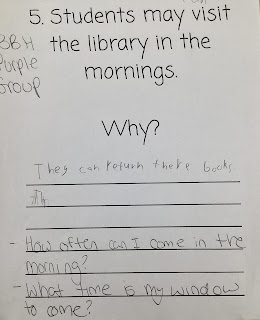 |
| This statement generated more questions than answers for this group. It made me realize that this class needed a refresher on this aspect of "library-ing." |
Survey Results
 |
| Our school library plays a huge role in the reading lives of students. |
 |
| Surprisingly, students report having an email sent home is helpful! |
 |
| The majority of students find our borrowing policies fair. |
My Takeaways
This was a very simple and straightforward way to accomplish several things:- Collect some data about the value of our library books to families
- Review our circulation policies and help students understand WHY they exist
- Have students weigh in on the fairness of our policies
- Create student buy-in
- Determine if changes needed to be made
This took only one library class and I feel it was time well spent. Will our time translate to books returned? Time will tell, but in the meanwhile, students had a real conversation about what their role in our library is and their responsibility.
This fall I am starting bi weekly emails home to remind families about what books their child has borrowed. I took out the "library language" and made it more accessible. Here is an example of a message that went home about sumer books:
Now I will see if this has an impact on circulation.

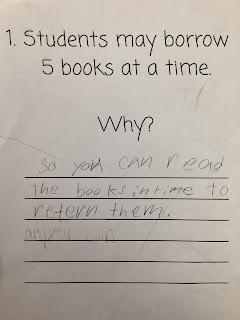
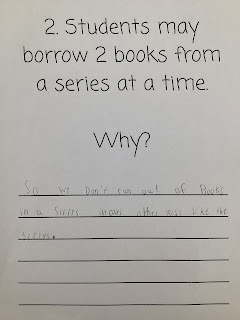

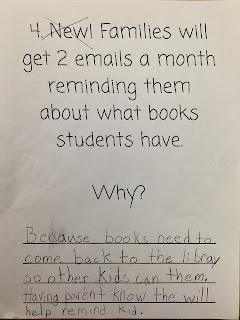
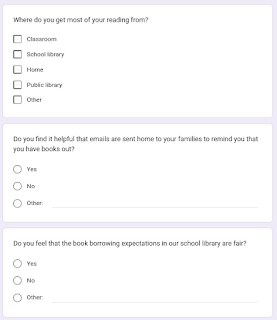




Comments
Post a Comment